#Ingeborg of Denmark
Explore tagged Tumblr posts
Text

Prince Carl of Sweden with his wife, Ingeborg, and daughters Margareta and Martha.
Ingeborg was a first cousin of Nicholas II on the Danish side, daughter of Maria Feodorovna's brother Frederick VIII. The marriage was arranged, but turned out to be a happy one. Carl and Ingeborg went on to welcome a third daughter, Astrid, future Queen of the Belgians, in 1905, and a son, Carl Jr, in 1911.
#romanov relatives#swedish royal family#danish royal family#ingeborg of denmark#carl of sweden#margareta of sweden#martha of sweden#my collection
38 notes
·
View notes
Note
can i request pope innocent iii art 🙏
one year later… have him about to put France under interdict

#philip augustus#ingeborg of denmark#pope innocent iii#medieval#12th century#philip ii of france#doodles#requests
17 notes
·
View notes
Text




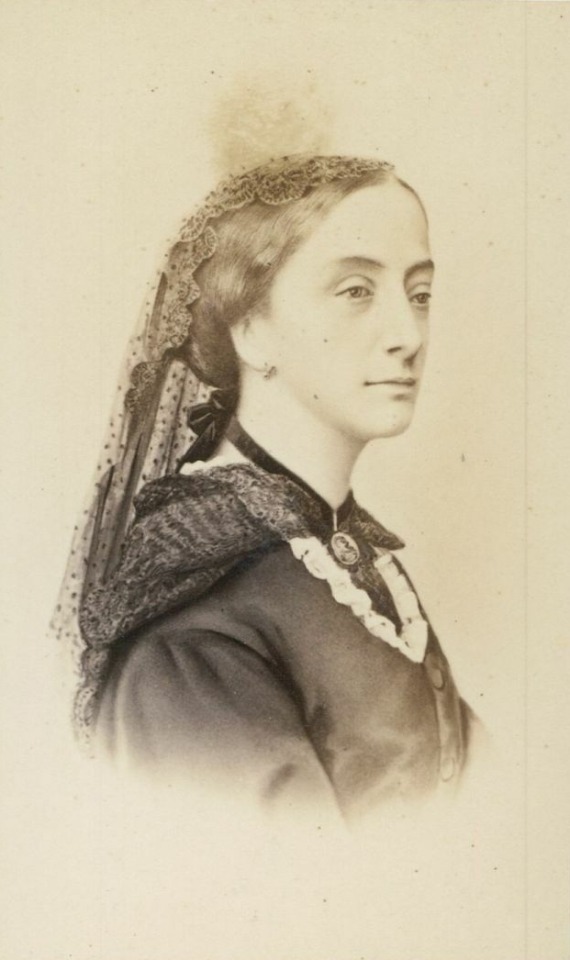





Royal Birthdays for today, August 2nd:
John Cicero, Elector of Brandenburg, 1455
Philippe II, Duke of Orléans, 1674
Mahmud I, Ottoman Sultan, 1696
Dietrich of Anhalt-Dessau, German Prince, 1702
Francisca of Brazil, Princess of Joinville, 1824
Emma of Waldeck and Pyrmont, Queen of the Netherlands, 1858
Constantine I, King of Greece, 1868
Ingeborg of Denmark, Duchess of Västergötland, 1878
Zein al-Sharaf, Queen of Jordan, 1916
Marie Gabrielle of Luxembourg, Countess of Holstein-Ledreborg, 1925
#john ii#philippe ii#mahmud i#Dietrich of Anhalt-Dessau#Emma of Waldeck and Pyrmont#constantine i#Zein al-Sharaf#royal birthdays#long live the queue#Ingeborg of Denmark#Marie Gabrielle of Luxembourg#Francisca of Brazil
8 notes
·
View notes
Text

#1900s#Ingeborg of Denmark#Princess Margaretha of Sweden#Princess Martha of Sweden#colorized#colorization#colorized photo
4 notes
·
View notes
Text







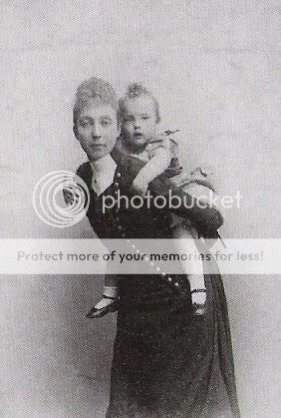




Royal Mothers + Piggybacks 🤍
#<3#british royal family#brf#russian imperial family#Danish royal family#drf#swedish royal family#swerf#srf#royalty edit#royals#my edit#queen alexandra#queen Mary#queen Elizabeth ii#Princess Diana#princess Catherine#Princess of wales#maria feodorovna#tsar Nicholas ii#Princess Anne#princess Royal#King Charles iii#prince george duke of kent#princess ingeborg of denmark#Alexandra feodorovna#alexei nikolaevich#romanov#romanovs#Denmark
251 notes
·
View notes
Text

Queen Astrid of Belgium and her mother, Princess Ingeborg, Duchess of Västergötland.
#queen astrid of belgium#princess astrid of belgium#princess ingeborg of denmark#princess ingeborg duchess of västergötland
11 notes
·
View notes
Text

Prince Oscar Carl Wilhelm, Duke of Västergötlan and Princess Ingeborg Charlotte Caroline Frederikke Louise of Denmark, Duchess of Västergötland and Ingeborg's mother Princess Lovisa Josefina Eugenia of Sweden, Queen consort of Denmark in the Fridhem royal summer residence, Sweden, with their children: Princess Margaretha Sofia Lovisa Ingeborg of Sweden, later Princess Axel of Denmark Princess Märtha Sofia Lovisa Dagmar Thyra of Sweden, later Crown Princess of Norway Princess Astrid Sofia Lovisa Thyra of Sweden, later Queen consort of the Belgians Prince Carl Gustaf Oscar Fredrik Christian, Duke of Östergötland, later Prince Bernadotte
Belgian vintage postcard
#norway#postkarte#summer#fridhem#postal#dagmar#axel#wilhelm#frederikke#royal#stergtland#astrid#oscar#children#ansichtskarte#lovisa#later#charlotte#västergötlan#tarjeta#ephemera#margaretha sofia lovisa ingeborg#dagmar thyra#consort#louise#denmark#thyra#vstergtland#postcard#eugenia
2 notes
·
View notes
Photo
I don't care what anybody says, but I think these girls are very uniquely beautiful like their mother Queen Lovisa. ✨


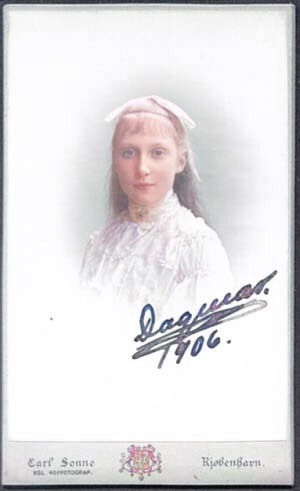
The three unmarried daughter of the Crown Prince and Crown Princess of Denmark have been with us so recently some few notes on their private life may be interesting to readers. Princess Ingeborg who is eighteen, will now take her eldest sister’s place, and probably she will be much thrown into the society of her new sister-in-law, Princess Carl of Denmark. In appearance she is like her mother, the Crown Princess, having strongly marked features; Princess Thyra, who is more delicate, is sixteen, and little Princess Dagmar is ten. They live very simply, these young Danish royalties. During the winter, which they spend in Copenhagen, they sleigh and skate a great deal, and in the summer, at Fredensborg, their grandfather, the King of Denmark’s castle, they enjoy some very happy weeks with their English cousins, and those from Greece and Russia. They have tennis and boating parties, bicycling on the laws of the Schloss, picnics in the lovely woods, and fishing on the Esrom Lake. Their brothers are very fond of them, and they teach them all kinds of outdoor sports. Like all Danish ladies, these young Princesses excel in house work. They are capital dairy-maids, good cooks, and in fact they can, to use a homely phrase, turn their hands to anything.
Atalanta 1897
#princess louise of denmark#princess louise of schaumburg-lippe#princess ingeborg of denmark#princess ingeborg duchess of västergötland#princess dagmar of denmark(the younger)#danish royal family#informational
21 notes
·
View notes
Text


Prince Carl of Sweden, Prince Gustaf VI Adolf, King Gustave V, Nicholas, Alexei, Prince Wilhelm of Sweden, Queen Victoria of Sweden born Princess Victoria von Baden, Tatiana, Alexandra, Olga, Princess Ingeborg of Sweden born Princess Ingeborg of Denmark, Princess Astrid of Sweden, Princess Margaret of Sweden born Princess Margaret of Connaught, Princess Maria Pavlovna of Sweden. On the ground Princess Margaretha of Sweden, Maria, Anastasia and Princess Märtha of Sweden in the park of the Tullgarn Palace in Sweden, 15th June 1909.
#otma#romanov#olga nikolaevna#tatiana nikolaevna#maria nikolaevna#anastasia nikolaevna#alexei nikolaevich#alexandra feodorovna#nicholas ii
16 notes
·
View notes
Text
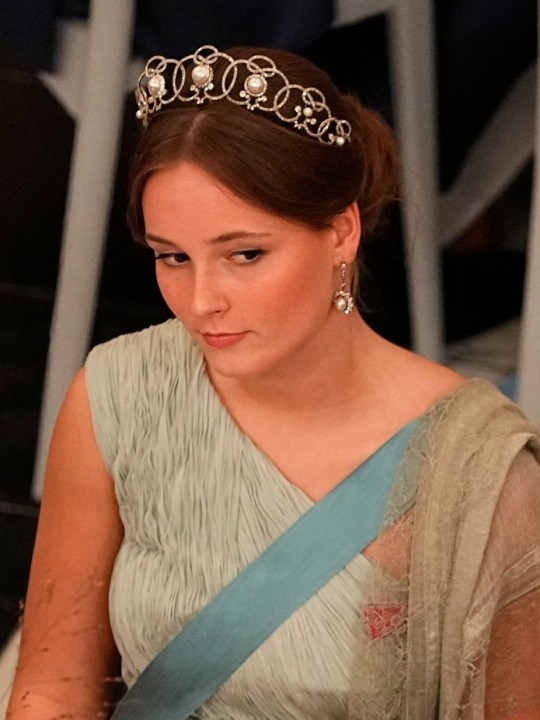
TIARA ALERT: Princess Ingrid Alexandra of Norway wore Princess Ingeborg's Pearl Circle Tiara for the gala dinner celebrating Prince Christian of Denmark's 18th birthday at Christianborg Palace on 15 October 2023.
#Tiara Alert#Princess Ingrid Alexandra#Norway#Norwegian Royal Family#Prince Christian's 18th Birthday#tiara#diadem#royal jewels#royaltyedit
214 notes
·
View notes
Text
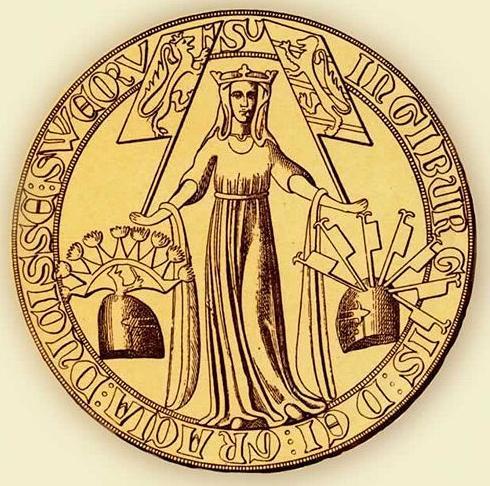
Ingeborg Håkonsdatter
Ingebjørg Håkonsdatter (1301–1361) was a Norwegian princess and the only legitimate child of Håkon V Magnusson (r. 1299–1319) [...]. Ingebjørg was brought up at the Norwegian royal court until she married Erik Magnusson of Sweden, Duke of Södermanland, in 1312. This marriage was undoubtedly part of a broader political alliance as Håkon V supported Erik and his brother Valdemar in their struggle against their brother, King Birger Magnusson (r. 1290–1318). The early years of the marriage were relatively uneventful, and Ingebjørg gave birth to a son, Magnus Eriksson, in 1316.
In 1317, however, hostilities between Birger and the dukes broke out once more when Erik and Valdemar were imprisoned at Nyköping Castle at the king’s behest. Ingebjørg immediately sprang into action, mobilizing her husband’s allies and even negotiating with Danish aristocrats for military support against Birger and his ally, Erik VI Menved of Denmark. Dukes Erik and Valdemar were murdered in 1318, but Ingebjørg continued to act in her late husband’s name as duchess dowager. Danish and Swedish aristocrats launched several expeditions against the Swedish Crown, conquering most royal castles and forcing Birger into exile. After the death of Håkon V in 1319, Ingebjørg’s son Magnus acceded to the Norwegian throne, and he was also elected king of Sweden later the same year.
After she oversaw Birger’s deposition and secured her son’s election, Ingebjørg became one of the most powerful political figures in Sweden, and her power and influence in Norway remained considerable. She acted as the de facto leader of the Swedish royal council and controlled an expansive network of castles centered around her stronghold of Varberg. Ingebjørg also took many decisions as a territorial princess, perhaps best exemplified by her abortive expedition to Skåne in 1322, launched in conjunction with her favorite and future husband, the Danish aristocrat Knud Porse. Her uncompromising attitude and reliance on foreign favorites, however, led to growing opposition from the Swedish aristocracy, and her holdings were confiscated and her decision-making powers removed by the royal council in 1326. Following her fall from grace, Ingebjørg lived in close proximity to her son Magnus until she passed away in 1361.
— Beñat Elortza Larrea, "Aristocratic Women as Leaders of Dissent in Medieval Scandinavia: Source Misrepresentation, or Agency through Ultranormativity?", Gender and Protest: On the Historical and Contemporary Interrelation of Two Social Phenomena. The image was taken from here.
#I love her so much#Ingeborg Håkonsdatter#historicwomendaily#swedish history#scandenavian history#norwegian history#13th century#women in history#my post#Ingeborg of Norway
10 notes
·
View notes
Text
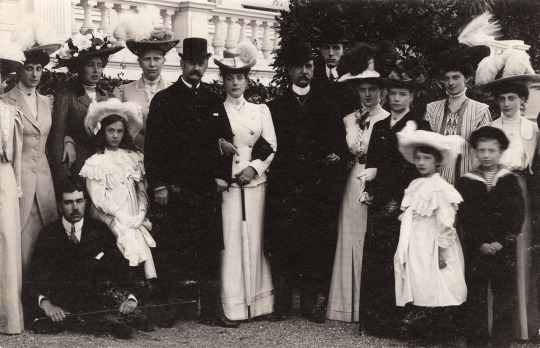
Gathering of Danish and Swedish Royal Families.
At center you can see King Frederick VIII of Denmark, his sister Queen Alexandra, brother King George I of the Hellenes (with his granddaughter Maria Pavlovna the Younger), and sister Maria Feodorovna. Frederick married Louise of Sweden (behind him), and one of their daughters, Ingeborg, married back into the Swedish family herself. Two of her daughters, Margaretha and Martha, are seen here, but her most famous, Astrid, is not.
#romanov#maria pavlovna the younger#maria feodorovna#dagmar of denmark#alexandra of denmark#frederick viii of denmark#louise of sweden#margaret of connaught#william of sweden#margaretha of sweden#martha of sweden#martha of norway#thyra of denmark#ingeborg of denmark#danish royal family#swedish royal family#my collection
30 notes
·
View notes
Text


Agnès of Meran and Ingeborg of Denmark
#philip ii augustus#philip augustus#12th century#medieval#agnes of meran#ingeborg of denmark#my art#doodles
29 notes
·
View notes
Text
Ages of French Queens at First Marriage
I have only included women whose birth dates and dates of marriage are known within at least 1-2 years, therefore, this is not a comprehensive list.
This list is composed of Queens of France until the end of the House of Bourbon; it does not include Bourbon claimants or descendants after 1792.
The average age at first marriage among these women was 20.
Ermentrude of Orléans, first wife of Charles the Bald: age 19 when she married Charles in 842 CE
Richilde of Provence, second wife of Charles the Bald: age 25 when she married Charles in 870 CE
Richardis of Swabia, wife of Charles the Fat: age 22 when she married Charles in 862 CE
Théodrate of Troyes, wife of Odo: age 14 or 15 when she married Odo in 882 or 883 CE
Frederuna, wife of Charles III: age 20 when she married Charles in 907 CE
Beatrice of Vermandois, second wife of Robert I: age 10 when she married Robert in 990 CE
Emma of France, wife of Rudolph: age 27 when she married Rudolph in 921 CE
Gerberga of Saxony, wife of Gilbert, Duke of Lorraine, and later of Louis IV: age 16 when she married Gilbert in 929 CE
Emma of Italy, wife of Lothair: age 17 when she married Lothair in 965 CE
Adelaide-Blanche of Anjou, wife of Stephen, Viscount of Gévaudan, Raymond III, Count of Toulouse, and later Louis V: age 15 when she married Stephen in 955 CE
Bertha of Burgundy, wife of Odo I, Count of Blois, and later Robert II: age 19 when she married Odo in 984 CE
Constance of Arles, third wife of Robert II: age 17 when she married Robert in 1003 CE
Anne of Kiev, wife of Henry I: age 21 when she married Henry in 1051 CE
Bertha of Holland, first wife of Philip I: age 17 when she married Philip in 1072 CE
Bertrade of Montfort, wife of Fulk IV, Count of Anjou, and second wife of Philip I: age 19 when she married Fulk in 1089 CE
Adelaide of Maurienne, second wife of Louis VI: age 23 when she married Louis in 1115 CE
Eleanor of Aquitaine, first wife of Louis VII and later Henry II of England: age 15 when she married Louis in 1137 CE
Adela of Champagne, third wife of Louis VII: age 20 when she married Louis in `1160 CE
Isabella of Hainault, first wife of Philip II: age 10 when she married Philip in 1180 CE
Ingeborg of Denmark, second wife of Philip II: age 19 when she married Philip in 1193 CE
Agnes of Merania, third wife of Philip II: age 21 when she married Philip in 1195 CE
Blanche of Castile, wife of Louis VIII: age 12 when she married Louis in 1200 CE
Margaret of Provence, wife of Louis IX: age 13 when she married Louis in 1234 CE
Isabella of Aragon, first wife of Philip III: age 14 when she married Philip in 1262 CE
Marie of Brabant, second wife of Philip III: age 20 when she married Philip in 1274 CE
Joan I of Navarre, wife of Philip IV: age 11 when she married Philip in 1284 CE
Margaret of Burgundy, wife of Louis X; age 15 when she married Louis in 1305 CE
Clementia of Hungary, second wife of Louis X: age 22 when she married Louis in 1315 CE
Joan II, Countess of Burgundy, wife of Philip V: age 15 when she married Philip in 1307 CE
Blanche of Burgundy, first wife of Charles IV: age 12 when she married Charles in 1308 CE
Marie of Luxembourg, second wife of Charles IV: age 18 when she married Charles in 1322 CE
Joan of Évreux, third wife of Charles IV: age 14 when she married Charles in 1324 CE
Bonne of Luxembourg, first wife of John II: age 17 when she married John in 1332 CE
Joan I, Countess of Auvergne, wife of Philip of Burgundy, and later John II: age 12 when she married Philip in 1338 CE
Joanna of Bourbon, wife of Charles V: age 12 when she married Charles in 1350 CE
Isabeau of Bavaria, wife of Charles VI: age 15 when she married Charles in 1385 CE
Marie of Anjou, wife of Charles VII: age 18 when she married Charles in 1422 CE
Charlotte of Savoy, second wife of Louis XI: age 9 when she married Louis in 1451 CE
Anne of Brittany, wife of Maximilian I, HRE, Charles VIII and later Louis XII: age 13 when she married Maximilian in 1490 CE
Joan of France, first wife of Louis XII: age 12 when she married Louis in 1476 CE
Mary Tudor, third wife of Louis XII: age 18 when she married Louis in 1514 CE
Claude of France, first wife of Francis I: age 15 when she married Francis in 1514 CE
Eleanor of Austria, wife of Manuel I of Portugal and later second wife of Francis I: age 20 when she married Manuel in 1518 CE
Catherine de' Medici, wife of Henry II: age 14 when she married Henry in 1533 CE
Mary, Queen of Scots, wife of Francis II: age 16 when she married Francis in 1558 CE
Elisabeth of Austria, wife of Charles IX: age 16 when she married Charles in 1570 CE
Louise of Lorraine, wife of Henry III: age 22 when she married Henry in 1575 CE
Margaret of Valois, first wife of Henry IV: age 19 when she married Henry in 1572 CE
Marie de' Medici, second wife of Henry IV: age 25 when she married Henry in 1600 CE
Anne of Austria, wife of Louis XIII: age 14 when she married Louis in 1615 CE
Maria Theresa of Spain, wife of Louis XIV: age 22 when she married Louis in 1660 CE
Marie Leszczyńska, wife of Louis XV: age 22 when she married Louis in 1725 CE
Marie Antoinette, wife of Louis XVI: age 15 when she married Louis in 1770 CE
39 notes
·
View notes
Text
I have been looking high and low, trying to find a place where people can watch full episodes of Matador with English subtitles, and nope. Not a single place. Only small clips on their own. It's the biggest TV show in Denmark, so I'm surprised there's nothing about it outside of Denmark, and it's frustrating, because it is really, really good. I am this close to just write a translation for it myself.

Honestly, I recommend this series to anybody that can get their hands on it. Especially in these times, where so many of Matador's themes are back in the mainstream and politics. Women's rights, the clashes between the old and the new, the rising Right Wing, the happenings of the WWII, religion, and later on in the series, a little bit of LGBTQ+. I rewatch this series almost very Christmas, and continue it up until January. It's truly amazing.
I hereby show you a scene from episode 5, which does in fact have English subtitles. This is one of the first "shake ups", the Varnæs family experience in the series, and as you can hear, Maude is not very happy about it, as Maude is married to Hans Christian (the head banker of Korsbæk bank) who is the brother of Jørgen Varnæs (lawyer in Korsbæk bank, part of the leading circle of the bank, and head of the conservative party).
One many themes of Matador is women's rights. The conservative housewives, believing in the old way of doing things, and their young and much more liberal daughters, who wants to decide for themselves. Though Minna used to be a conservative woman, her anger at what Jørgen has done to her, puts her in a position where she doesn't care what the world thinks of her - she wants revenge and she wants him to hurt.
youtube
As mentioned before, another theme is the clashes between the old and the new. In this scene from episode 9, Mrs. Fernando Møhge (Hans Christian and Jørgen's aunt), along with her daughter Misse Møhge, has gone to the bank in order to reatrive a paper. They have just vietnessed a building project on a fabric factory, funded by Mads Skjern, in order to expand his clothing store. But this build may not in fact be totally legal, and you are about to hear why. And, well, with Mads Skjern and his new buisness turning out to threaten the status of the old Varnæs family, the new banker Skjold-Hansen, suddenly sees a place where he can prove himself, and protect his money and the old bank.
youtube
But one argument that Mads Skjern brings up again and again through out the series is; what is best for the city? A park for Mrs. Møhge's dead husband, or a factory that will bring buisness and job opportunities? Is the old and dead more important then the living and working?
We then jump forward to episode 11, where Ellen Skjern (Mads' adopted daughter from his wife's - Ingeborg - first marriage) is getting a horse (an Icelandic horse) due to her good grades in school, when though that has always been Daniel's (Mads' son from his first marriage, with his first wife who died when Daniel was still a baby) dream. It is here that we learn, that even though Mads believe in bringing something new to the city of Korsbæk, he is still very conservative in his beliefs and oppinions, to the point where he's almost more curl than caring towards his family, though he believes he's doing what is best, to protect them against the old families of Korsbæk, not seeing how he is slowly tearing it apart himself.
youtube
Here, in episode 18, taking place in the second world war, we have probably one of the most famous moments from pig dealer Larsen's dog Kvik.
youtube
And finally, in episode 19, where the bike dealer's sons once again throw rocks at Skjold-Hansen's home, because he has leaned out his large parking house to the Germans.
youtube
Matador is to this day, one of the most watched shows in Denmark, and often recommended as one of the most important things to watch when moving to Denmark, or trying to learn the Danish language. My grandmother and both of my grandfathers, who would have turned 94 this year, was all born in 1931, and would there have remembered the time Matador takes place in. This was truly fun to watch with my grandmother, as to her it was nostalgia, but to me it was history.
History, story lines, character development, well thought out plot points. Truly amazing, and so much more deserving of praise from a larger audience.
2 notes
·
View notes
Note
I was surprised I liked Reese’s as much as I did. They are like a medival rock star. What songs were they singing in Chapter 4? I searched for Frankish Queen in a Tower, but couldn’t find it. I would like to find the lyrics.
We are glad you liked Reese! We were a little worried, as they were the last RO to be introduced. They are Maudine's baby, and I think she would have rioted if they went unloved, lol.
The first song is "Fair Annie." It's a song from the 1200s written by an unknown woman about the tradition of unmarried wives.
"The Frankish Queen in a Tower" is a fictional song that we made up. However, it is based on a real medieval scandal. You can read about if you look up the marriage of Ingeborg of Denmark and Philip II of France. The story goes more or less like the song, however unfortunately Ingeborg did not get herself a young hottie upon getting out of the tower. We thought it only fair she get one here.
The last song, "The Turtle and the Crane," was also a fictional song. It is based on a Japanese fairytale "Urashima Tarō." It goes about the same as that story, though we definitely recommend looking up the original tale!
6 notes
·
View notes